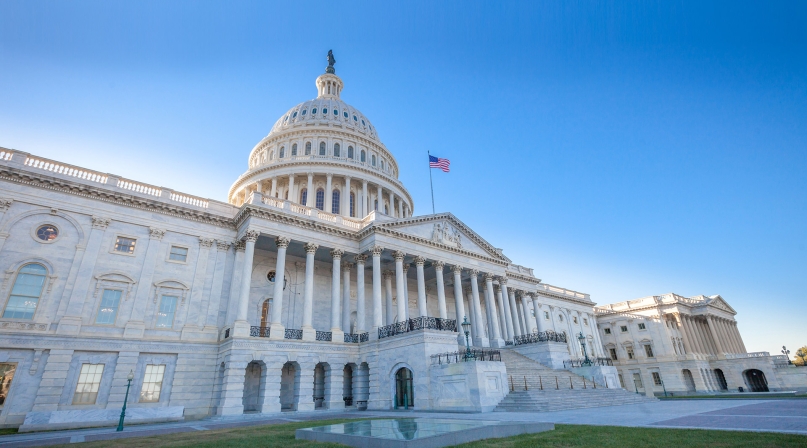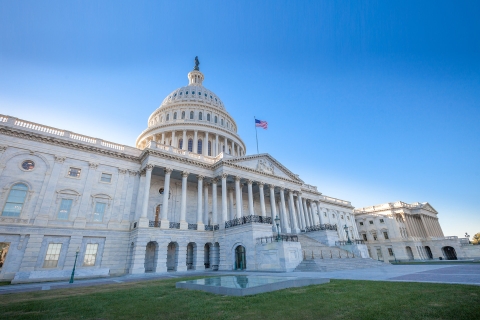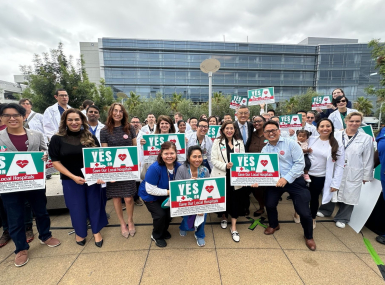Senate passes $484 billion coronavirus relief package
Author

Blaire Bryant
Upcoming Events
Related News

UPDATE: On April 24, President Trump signed into law the Paycheck Protection Program and Health Care Enhancement Act (H.R. 266). The bill's enactment comes one day after the legislation passed the U.S. House of Representatives by a vote of 388-5.
On April 21, the U.S. Senate passed the Paycheck Protection Program and Health Care Enhancement Act, also known as the “COVID-19 3.5” relief package. The $484 billion package, which was originally designed to only be a $250 billion stopgap measure, is the second largest of the four coronavirus response bills Congress has passed so far.
The package includes additional funding to support small businesses, hospitals and enhance COVID-19 testing.
- New funding for small businesses. $320 billion to replenish the Small Business Administration’s (SBA) Paycheck Protection Program (PPP), a loan initiative aimed at helping small businesses weather the economic fallout from the COVID-19 response. Lawmakers had allocated $349 billion to PPP as part of the $2 trillion CARES Act, but the program ran out of money less than 3 weeks after it was authorized. Of this amount, $60 billion would be set aside for smaller lending institutions such as credit unions and other community-based real financial institutions, with the goal of reaching underbanked businesses.
The package would also appropriate an additional $50 billion for SBA’s Disaster Loans Program Account and $10 billion for Emergency Economic Injury Disaster grants, while increasing the authorization level for the emergency economic grants from $10 billion to $20 billion. SBA would also receive more than $2 billion to cover salaries and expenses for federal employees.
- More support for hospitals and healthcare providers. The interim relief package would provide an additional $75 billion to support local hospitals and health care providers by providing reimbursements for COVID-19 related expenses, lost revenue and public health services for uninsured Americans who have been infected by COVID-19. This new wave of funding is in addition to the $100 billion allocated under the CARES Act and will be distributed under the Public Health and Social Services Emergency Fund,
The U.S. Department of Health and Human Services (HHS) is in the process of developing formulas for additional targeted distributions to health care entities hit hard by the COVID-19 outbreak, namely rural providers, and important for counties – providers who predominately serve the Medicaid population.
- New funding for target COVID-19 testing in rural areas and for the uninsured. The interim package would provide $25 billion for “necessary expenses to research, develop, validate, manufacture, purchase, administer and expand capacity for COVID–19 tests” to help effectively monitor and suppress the COVID-19 pandemic. Of the total amount allocated, the package would provide:
- $11 billion in direct funding for states, localities and territories to scale up the administration’s COVID-19 testing, laboratory capacity, contact tracing and support employer testing
- $225 million in direct funds to rural health clinics through grants and other mechanisms
- Up to $1 billion to cover the cost of testing for the uninsured
Funding for increased testing capacity is critical during this time, and is especially pertinent for rural counties, as hospital systems in these areas have experienced increased financial strain due to loss revenue streams from non-COVID-19 related care.
- Mandates states and localities to report how resources will be used for testing and COVID-19 community mitigation policies. Alongside increased funding for testing, the legislation would also require that state and localities that receive funds provide a plan for COVID-19 testing to the HHS Secretary no later than 30 days following the bill’s enactment. Specifically, the plan must outline how states and localities will utilize these funds for the remainder of the 2020 calendar year related to – the number of tests needed on a monthly basis; a monthly estimate of laboratory and testing capacity including related workforce, equipment and supplies, and available tests; and a description of how you will use resources for testing and community mitigation efforts.
The interim relief package did not include another round of much-needed aid to state and local governments or funding to offset the drastic state and local revenue shortfalls that state and local governments are experiencing across the country. Prior to the Senate’s release of the COVID-19 3.5 package, NACo, along with other state and local national organizations, released a statement calling on Congress to provide robust and flexible relief as part of an interim relief package for the COVID-19 pandemic.
Now that the package has passed the Senate, the House will vote on the bill this coming Thursday, April 23, where it is expected to pass.
As Congress moves to pass another package, NACo will continue to press for robust flexible funding directly to counties of all sizes, because we are on the front lines of responding to this pandemic. County governments are responsible for emergency operations centers, human services, jail management, 911 services, coroners, and medical examiners. Counties also operate nearly 1,000 public hospitals, 1,900 local public health departments, more than 800 long-term care facilities and 750 behavioral health departments. Further, NACo estimates that counties will have budget losses of $144 billion through fiscal year 2021 due to COVID-19. Counties need immediate flexible assistance that allows us to make up for lost revenue as we continue to expend enormous sums fighting COVID-19.

Attachments
Related News

CMS issues new guidance on Medicaid Community Engagement Requirements
On December 8, the Centers for Medicare & Medicaid Services (CMS) released a Medicaid and CHIP Services Informational Bulletin (CIB) directing states on how to implement the Medicaid community engagement requirements enacted under Section 71119 of the One Big Beautiful Bill Act legislation (Public Law 119-21), or H.R. 1.

California county sales tax measure backfills federal healthcare cuts
Santa Clara County, Calif. will raise an estimated $330 million each year from a sales tax to backfill lose Medicaid funding.
